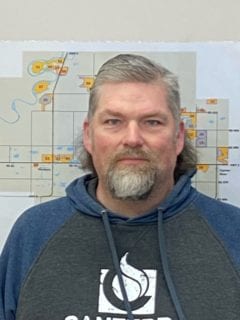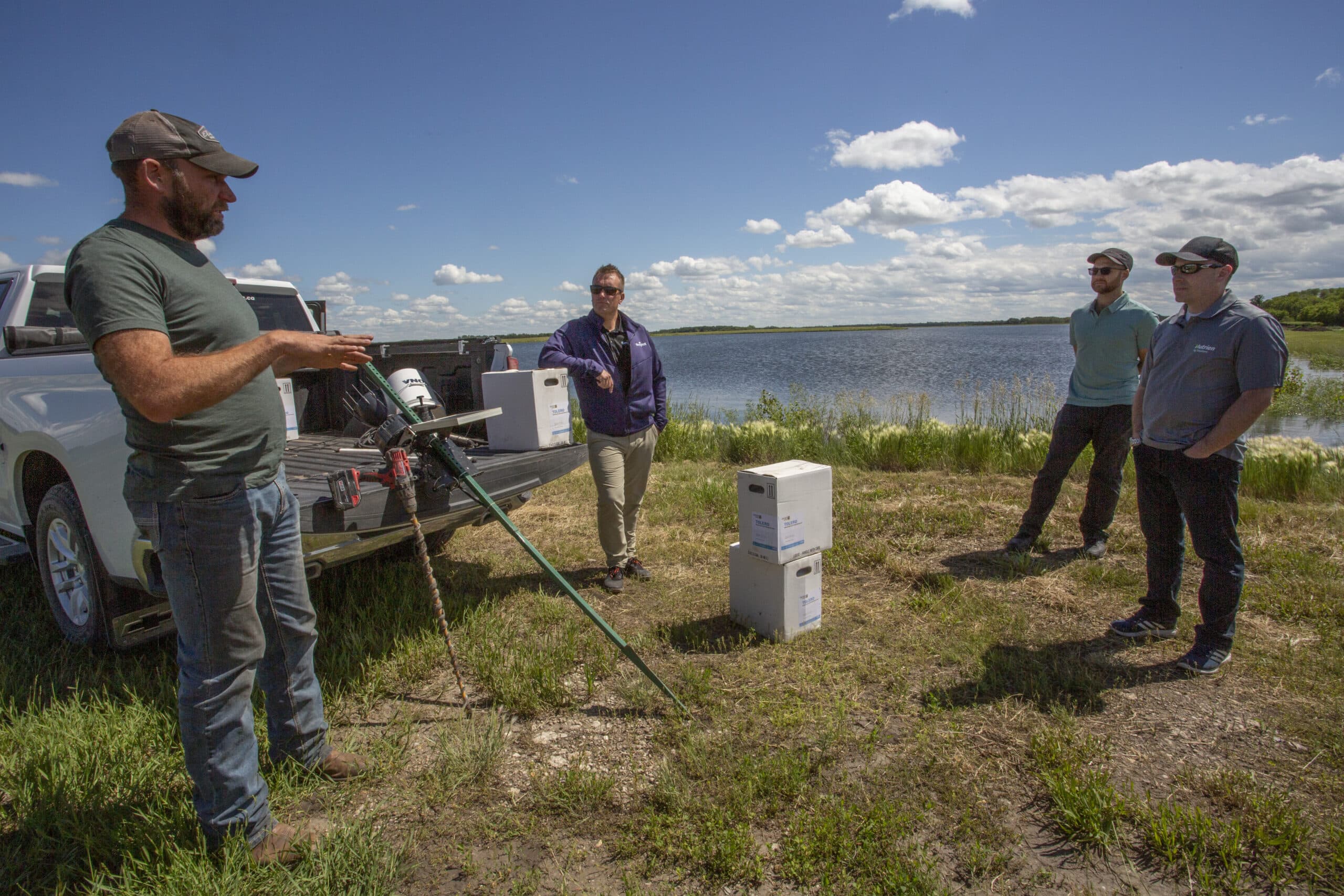A study in Manitoba looked at how potato growers are managing water on their farms and the advantages of it to the whole value chain.
Water is a finite resource and it’s used for various purposes. Whether providing hydration to people and animals, power for electricity or nourishment for plants, water is what keeps the world going, which is why the conservation of it is important.
For major crop and food processing companies in North America, they’re constantly looking at ways to help the producers they work with sustainably use the water they need for their crops. In 2022, Nutrien, J.R. Simplot Company, General Mills and BASF teamed up to take a closer look at how producers in one region they all worked in were using their water — and that region is Manitoba.

“When you talk to food companies, most of their impact to water, greenhouse gases, and biodiversity, falls back to what they source from the farm — it’s all in their kind of upstream (from the farm). So, the project is about understanding how do you drive that investment, that impact on those key environmental topics that works for growers — and it’s through collaborative water stewardship action in a watershed,” Mike Nemeth, senior advisor for agricultural and environmental sustainability with Nutrien, says in a phone interview.
The Lake Winnipeg water basin in Manitoba has been historically impacted by runoff from surrounding fields and growers in the region have had problems accessing enough water for their crops. The group wanted to look at what the current practices growers are using for water stewardship, how these practices could be improved in the future, who benefits from improvements, and how the environment, communities and producers benefit from what growers are doing, Brandy Wilson, global sustainability director for Simplot, explains in a phone interview.
“The goal is really to implement water stewardship plans on farms to help improve the environment and improve outcomes and stuff like that for the farms and for the environment itself,” she adds.
For the first phase of the project the companies worked with the Alliance for Water Stewardship (AWS), as it provides fact-based information on sustainable water usage. The companies partnered with The Water Council and ALUS Canada, which provided management of the project through an agrologist.
The agrologist “worked with Nutrien and Simplot agronomists to build relationships with the growers, (to) be able to work with the growers, because you have to be able to have that relationship and actually work with the growers to develop water stewardship plans based on the AWS standard,” Nemeth explains.
They worked with four growers — two of whom had farms located in the Redboine watershed and two in the Central Assiniboine watershed — both of which in the Lake Winnipeg basin. Initially eight growers who all worked with or had contracts with the partners were approached to take part. The four were chosen based on their willingness to undertake the project, relationship with the companies and having a sizeable land base using irrigation.
One of the growers was Chad Berry who owns Under the Hill Farms near Cypress River, Man. At first Berry didn’t fully understand the idea of the project but was interested enough and thought there was things he could learn from it.

The first phase of the project included stakeholder engagement with growers, completed as part of the AWS standard. The AWS standard uses a comprehensive stakeholder engagement process similar to the EcoMetrics methodology stakeholder engagement process, a report on the project explained. As part of it, growers had to identify shared water challenges and opportunities within their watersheds.
ALUS Canada ran the stakeholder engagement process with growers using the AWS standard criteria. As part of the data gathering stage, ALUS Canada sent a supplemental questionnaire to the producers asking for additional input on expected benefits, including asking growers to rank expected benefits of water stewardship practices in order of perceived priority, the report said.
Through this evaluation, growers were able to identify all the different levels of partners they work with when it comes to water for usage from neighbours to watershed districts to municipalities.
“You don’t think of partners all the time — how you’re affecting them and how they affect you,” Berry explains in a phone interview. “We’ve always worked with our neighbours, but we got down further than that, got down to working with neighbours, local towns, schools, districts, water management zones. There was a lot of other people we started working with that we hadn’t worked with in the past.”
On the company side, they were impressed to find data from the EcoMetrics analysis showing the value of water stewardship and sustainability across the value chain. By doing water stewardship on farm, producers can drive good environmental outcomes, Nemeth says.
“We all want to be able to eat, we want to have economies and communities that are that are successful. But we don’t want to have that at the expense of environmental degradation,” he adds.
While the first phase of the study only looked at a single North American watershed in Manitoba, those involved in the project see it applicable globally. By using the assessment tools, growers in any region would be able to identify their own partners across the value chain and therefore gain a better understanding of how their water stewardship work is adding value at all levels.
There are plans for future phases of the project. Modelling has been done and plans drawn up on projects that could give growers the best return on investment. Wilson explains they’ve broken it down into two different strategies — practices to do in fields such as tillage and changing crop varieties grown, and practices to do on edge of fields on marginal lands such as growing buffer strips.

“We were able in this first phase to come up with what are those things. And then what’s the best return on investment to the growers and other stakeholders from doing them,” she says.
Plans for the next phase of the project include implementing those strategies and seeing what benefits they provide. The partners want to create a template that producers located in other watersheds can use do these assessments themselves. There are plans for the Potato Sustainability Alliance to take over the role ALUS Canada played in the first phase.
For Berry, he encourages other growers to get involved. He was surprised by how much he was able to learn about water usage on this own farm through the first phase of the project and is looking forward to taking part in the next phase.
“I think it works on an individual basis because you do all your assessments of your own operation first,” Berry says. “See where you can improve and what you can move on and see what you’re doing already. As you go through the assessment, you’ll figure it out yourself.”
Header photo — One of the Lake Winnipeg Basin Project farm participants talking to the project team about use of soil moisture probes to increase irrigation efficiency with an irrigation reservoir in the background. Photo: ALUS Canada
Related Articles
Can the Potato Sustainability Alliance Create a Way to Measure Sustainability?
The Regenerative Ag Debate for Growing Potatoes, is it Possible?









